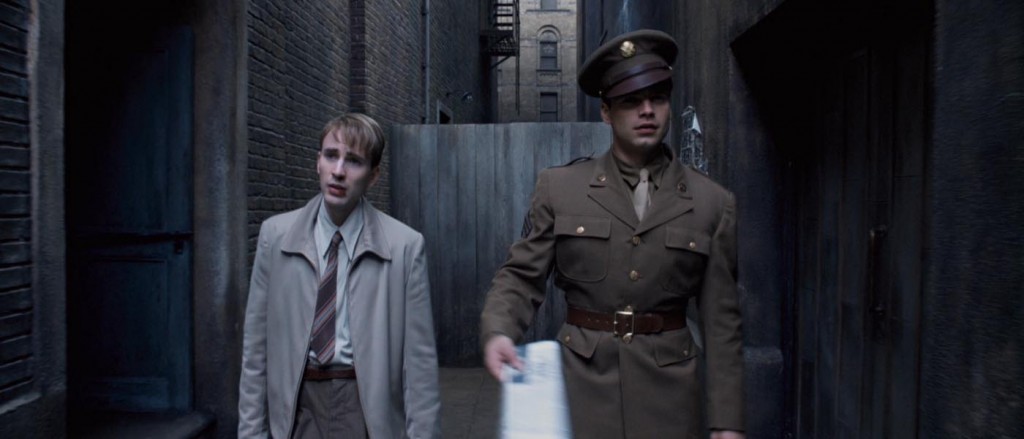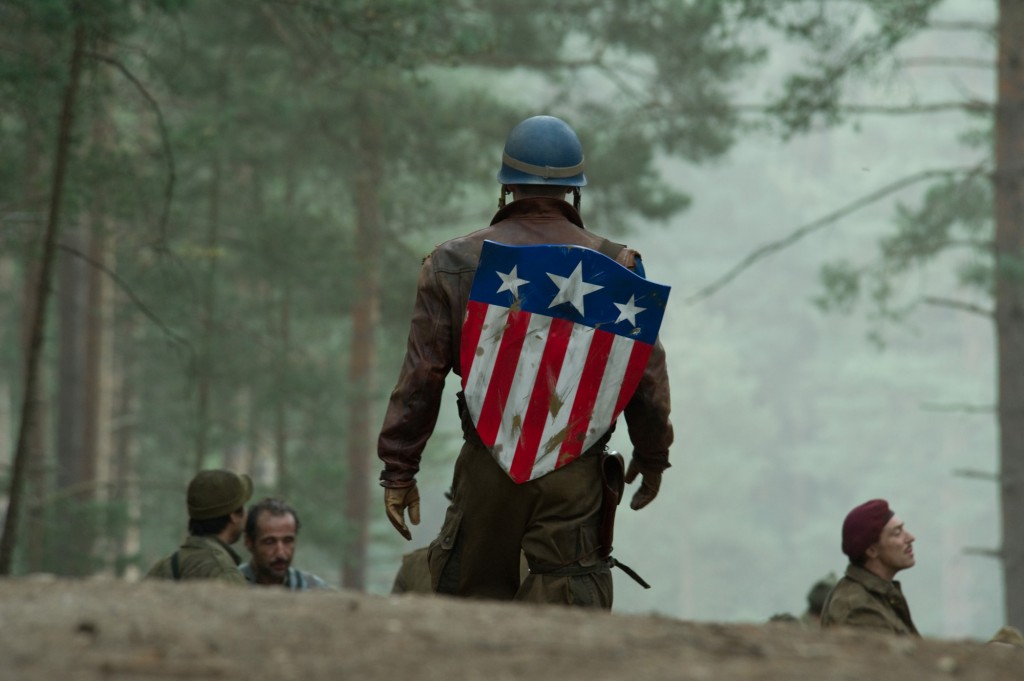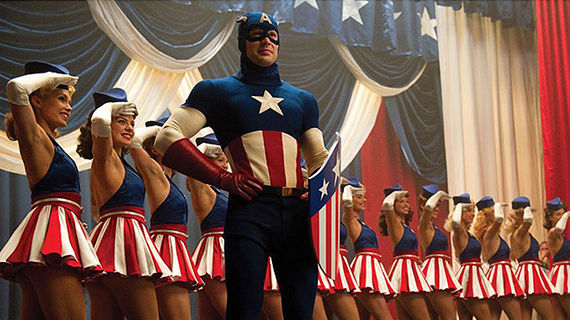Going into the first Captain America—a movie starring Chris “Fantastic Four” Evans and directed by Joe “Jurassic Park III” Johnston—my expectations were absolutely nil. Like everyone else, I’d been entranced by Iron Man and intrigued by the expansion of the Marvel Cinematic Universe with Thor. Bringing the Avengers together for a film was the big, world-shaking event I was anticipating. Seeing the solo Captain America film seemed like a bit of box-checking before the big event. Even the title of the film primarily alluded to the upcoming sequel.
The one thing that caught my attention before walking into the theater was the fact that it was set during World War II. I’ve always been fascinated by the history of the war. I had always assumed that a Cap movie would have an opening sequence set during the war and then kick him into the modern era in the first twenty minutes, a la the Thor movie or Ultimates #1, which was just about the only comic starring Cap I’d ever read.
Once my butt was in the seat, I was transfixed. In two hours, I went from not “getting” the point or appeal of Captain America to being a voracious fan of the character and Evans’ take in particular. I’m far from alone in this experience. Here in 2016, after The Avengers and The Winter Soldier have somewhat overshadowed MCU Cap’s maiden voyage, it’s worth revisiting just what makes The First Avenger remain an essential and unsurpassed classic of superhero filmmaking.
First of all, there’s the titular character himself. Evans, Johnston, and screenwriters Christopher Markus and Stephen McFeely did their homework and delivered, not a macho flag-waver, but the true Marvel Captain America. A New York liberal at heart, Steve Rogers is driven by the same unwavering compassion as Superman or Galahad. Evans sums up the character in one line: “I don’t want to kill anyone…I don’t like bullies.” That dramatic conflict between his universal love for humanity and his interventionist desire to save others continues to drive interest in the character.
Even if Steve were pitch-perfect, we wouldn’t understand him without seeing him in his original context. Devoting a film to his origin and experiences in World War II is the kind of brilliant creative decision that Marvel’s early adherence to a Cinematic Universe made possible. Contrast this to, say, 2011’s Green Lantern which feels the need to stuff in origin scenes, space scenes, romance scenes, and a city-ripping encounter with Parallax—a kitchen-sink approach to jolt a franchise into existence that left audiences no time to connect with the character. Captain America is not an overly complex character, but our understanding of him in the Avengers and Russo films is made richer by the backstory given him here. The First Avenger also remains unique in the rich visual world that Johnston was able to invoke with the period setting.
But more to the point, The First Avenger is a fine standalone film that does not ask the audience to wait for future sequels to deliver. Like Superman: The Movie, it touches on every core aspect or image of the character while refusing to compromise on pacing and structure. In the first act we are introduced to Rogers and his all-consuming goal, to find a way to fight the Nazis. Our inciting incident is the use of the serum to transform Rogers, but the movie takes its time and lays the groundwork for the characters and conflicts. All of the action in the second and third act pays off information we’re given in the first. The masterstroke here is casting Cap as a USO character at the midpoint. This allows the whole movie to have its cake and eat it too—it patches the real-world logical flaw that one “super-soldier” can’t win a war and shouldn’t be on the front lines, it allows the movie to embrace Golden Age era Cap imagery, it makes Cap an in-universe hero and person of note, and it gives Cap a meaningful obstacle in the second act. In the theater I was moved to stunned disbelief and then to whoop with joy at the sheer brilliance of this sequence. It’s a moment that just isn’t in any other superhero film’s vocabulary.
Not content only to hand the Marvel Cinematic Universe its focal character, The First Avenger goes on to knock the rest of the cast out of the park as well. Every phrase out of Tommy Lee Jones’ mouth is guffaw-worthy, yet yielding not an inch of dignity as the battle-hardened Colonel Phillips. Toby Jones’ Arnim Zola makes a thankless role so memorable that it changes the whole fabric of the film universe, and Hugo Weaving as The Red Skull is an inspired casting coup. But it’s Sebastian Stan’s re-definition of Bucky, and Hayley Atwell’s more-or-less creation of Peggy Carter, that are the most memorable. Once again, the fact that they were building a universe as well as filming just one movie allowed these characters to transcend their one-note roles in the plot. Peggy “Cap’s past-timey love interest” Carter has her own spin-off! Stan puts his all into building a believable, funny, and textured relationship with Evans’ Cap that has also paid dividends for actor, character, and franchise. And not to be outdone, Dominic Cooper’s Howard Stark makes Iron Man retroactively better, by giving the Stark Family deep roots while avoiding mimicry or rehash of Downey Jr.’s iconic performance.
Captain America: The First Avenger broadened and deepened the Marvel Universe, and was improved itself as a film thereby. To this day it is one of the most unique films in the superhero canon, a period adventure with faultless character work and superb action. The Russo brothers excelled on Winter Soldier and may again on Civil War, but they owe it all to the great storytelling foundation that Evans and Johnston created right here.




